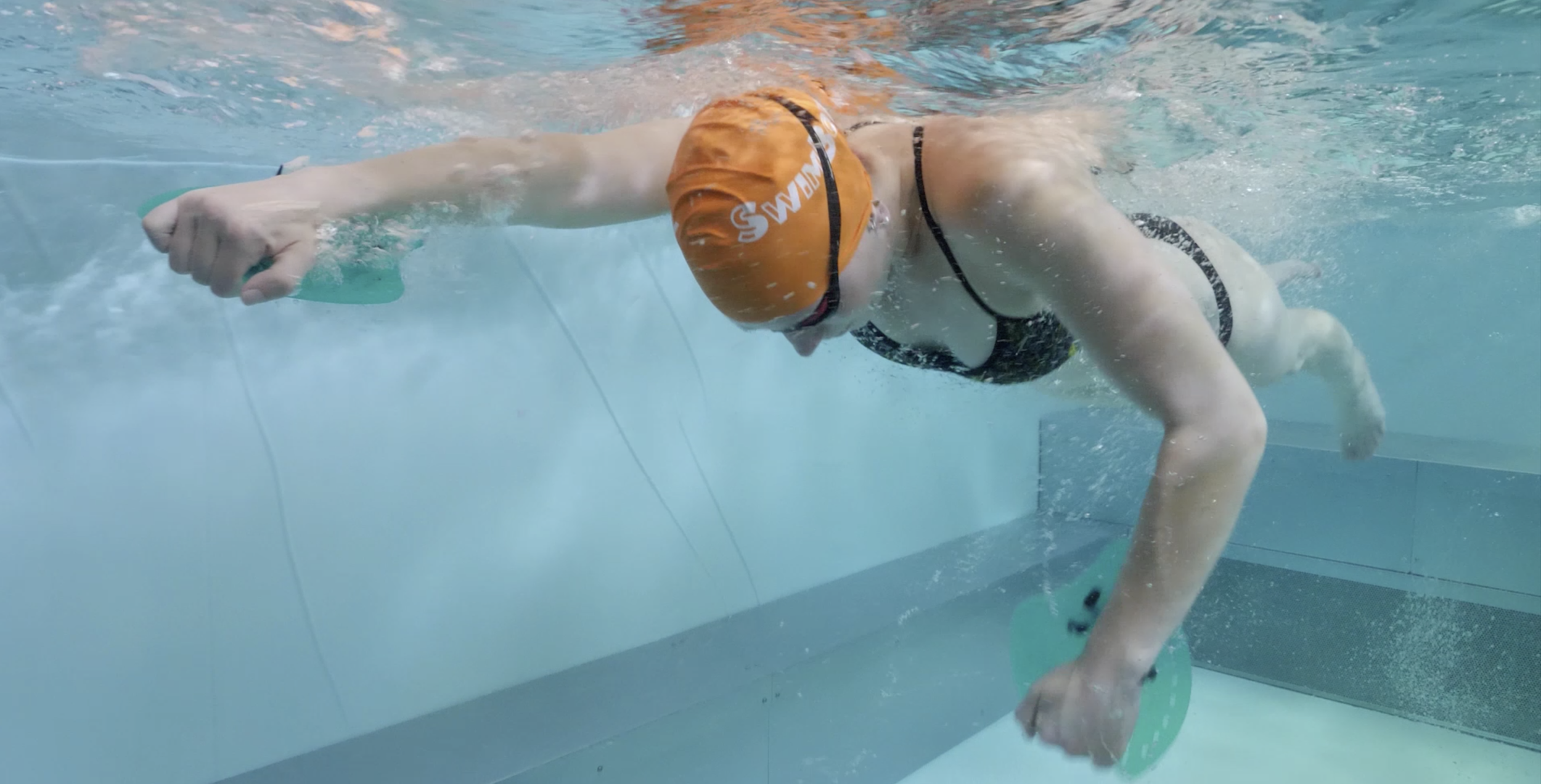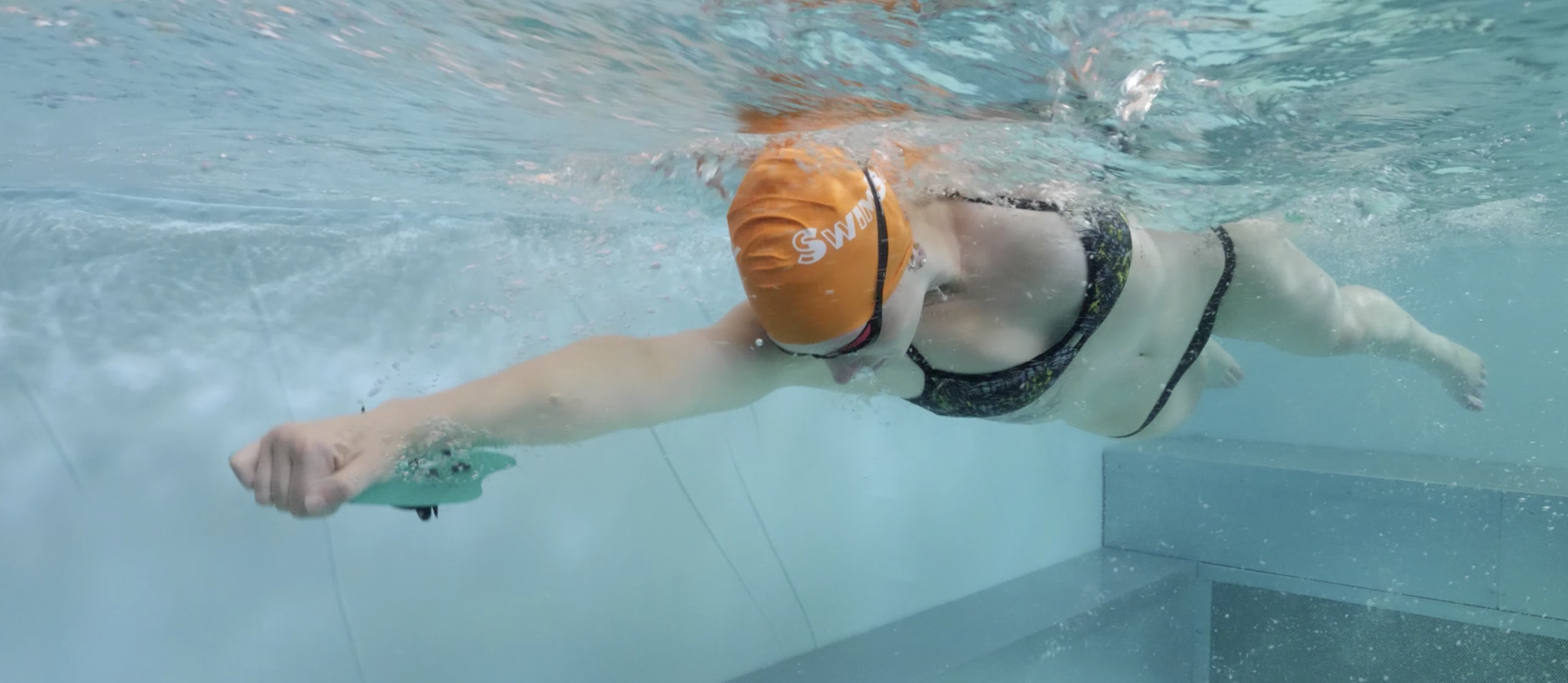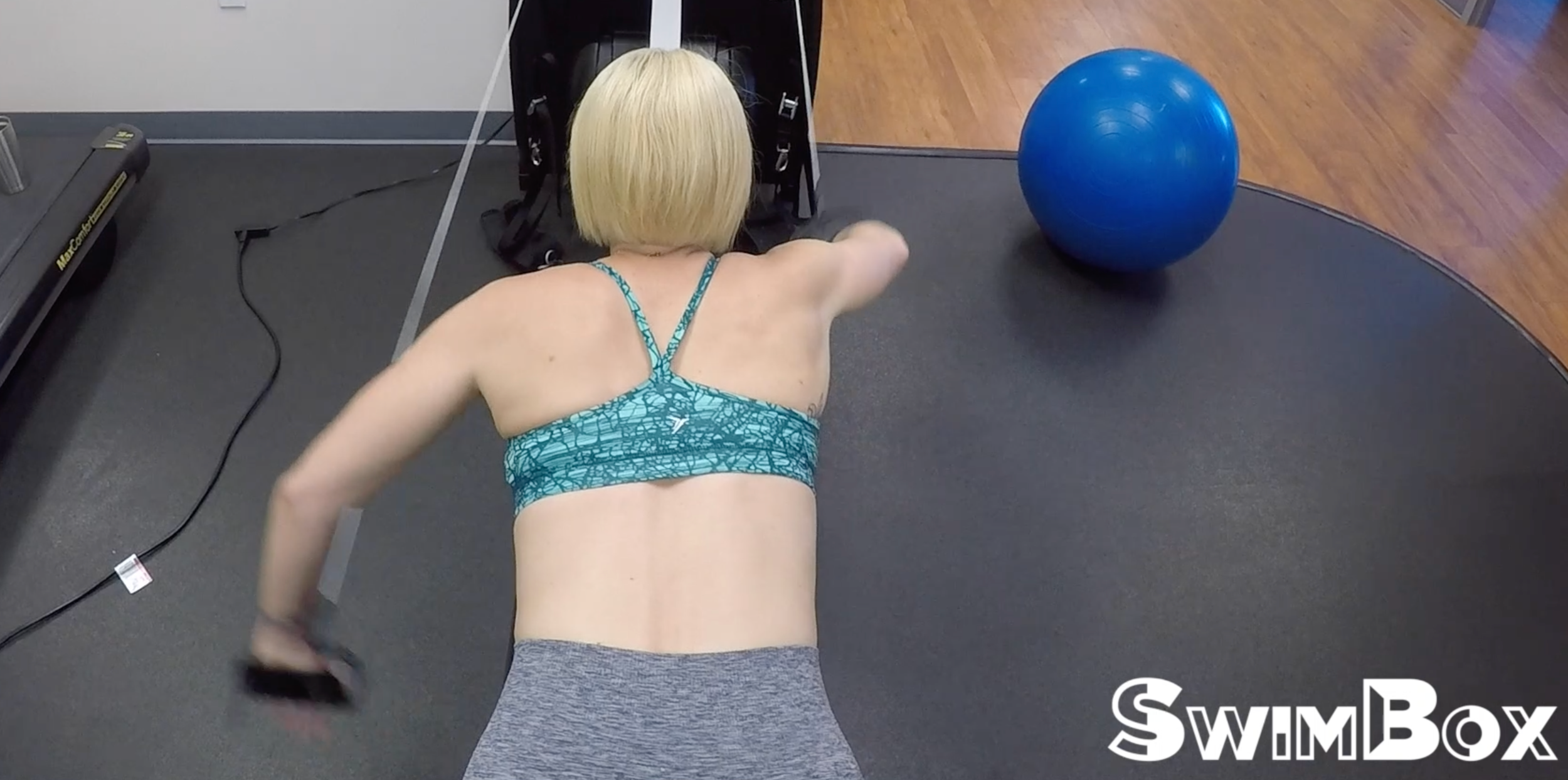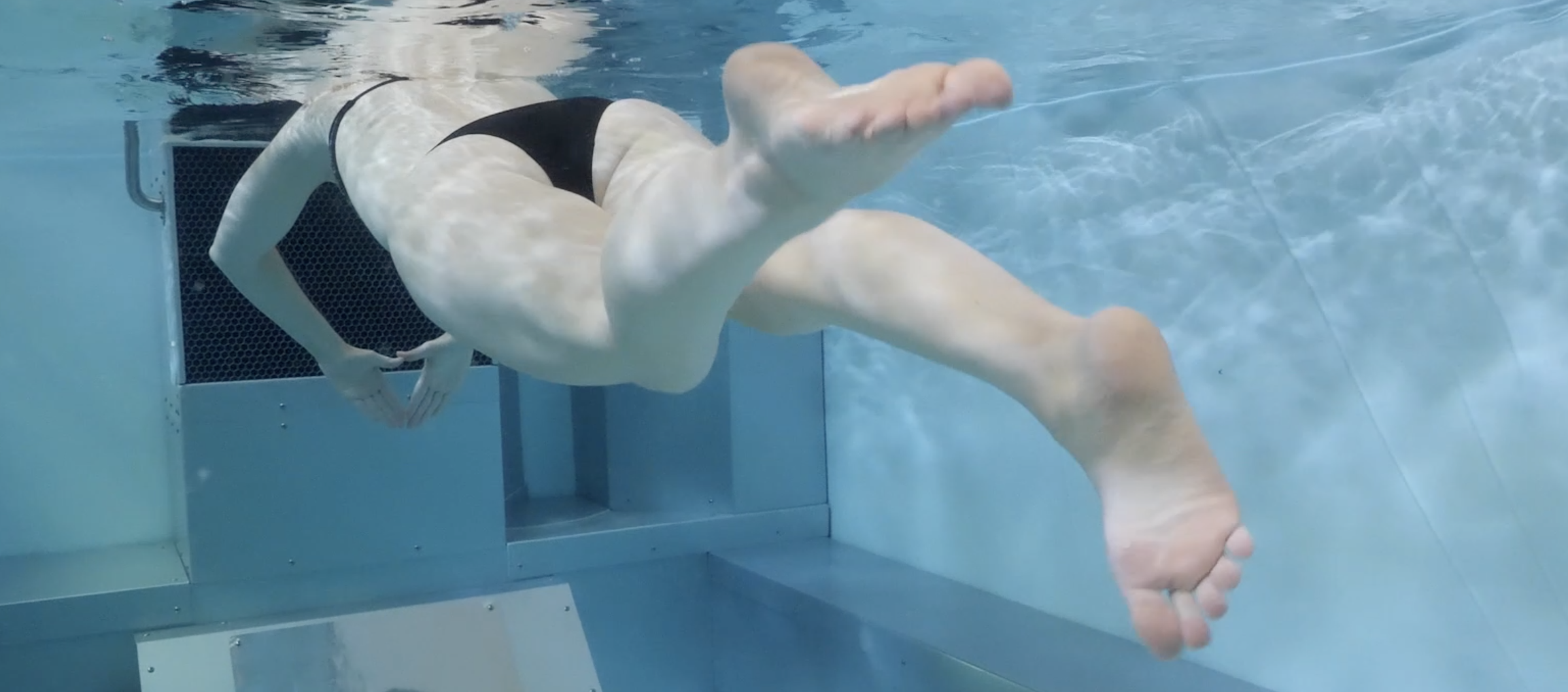Learning how to properly set your catch might be one of the smallest details with the largest impact for your freestyle. Fun fact: I didn’t learn how to properly set my catch until about 2 years ago, and I’ve been swimming for twenty-four years…yeesh, my bad. The hardest thing for me was that I didn’t even know the feeling that I was looking for during my catch, so I never knew I wasn’t making this movement correctly. To this day I still work on this 2-3 times a week with different drills to help me better understand what I need to be doing. My favorite drill right now to focus on finding the right feeling for my catch is Paddles in Hands.
Instead of using your hand paddles they way they were meant to be worn, this drill has you simply hold them in your hands while wrapping your fingers and thumbs around them to hold them in place.
Using the paddles this way forces you to focus on creating your paddle, as well as actually feel the resistance of the water against your forearms. Because of the paddles, this drill makes you have to set your paddle with your hand AND your forearm. This can be a tricky movement to understand, but the more surface area you have pushing against the water, the more you’ll be able to propel yourself forward.
This drill is also great to help you learn to set your catch early. If you set your catch late during Paddles in Hands, you’ll definitely feel the difference. A late catch during this drill will give the feeling of pushing down in the water, which is not what we want. You want to have the feeling of pushing backwards. A downward push will not help to move you forward in the water, and will actually throw you out of streamline and off balance.
The image above is a great shot of both a late catch and a properly timed catch. The left shows the late catch, which you can see is set when the arm is almost perpendicular to the body. When you set your catch this late, your arm drifts downward and loses all of the potential propulsion you would have if you’d set your catch when your arm is closer to parallel to your body. The right shows good timing of the catch. You can see the slight bend in the wrist, indicating the beginning of the catch before we move into the pull phase. By setting this early, when your arm is closer to the surface of the water, you’re able to push backwards against much more water than you would if you set your catch later.
It might not look like a huge difference, but having a good catch means you’re pushing back against more water. This leads to stronger pulls, fewer strokes, and an all over more efficient stroke. A late catch? That leads to having less water to push back against, more strokes, and will end up tiring you out more quickly because you’ll be stroking more and pulling less, causing you to expend more energy to move through the water more slowly.
As I’ve said before, swimming is a sport of centimeters. So even though this drill is working to fix what looks like a very slight difference in movement, it will pay off ten-fold once you get the hang of it.
















